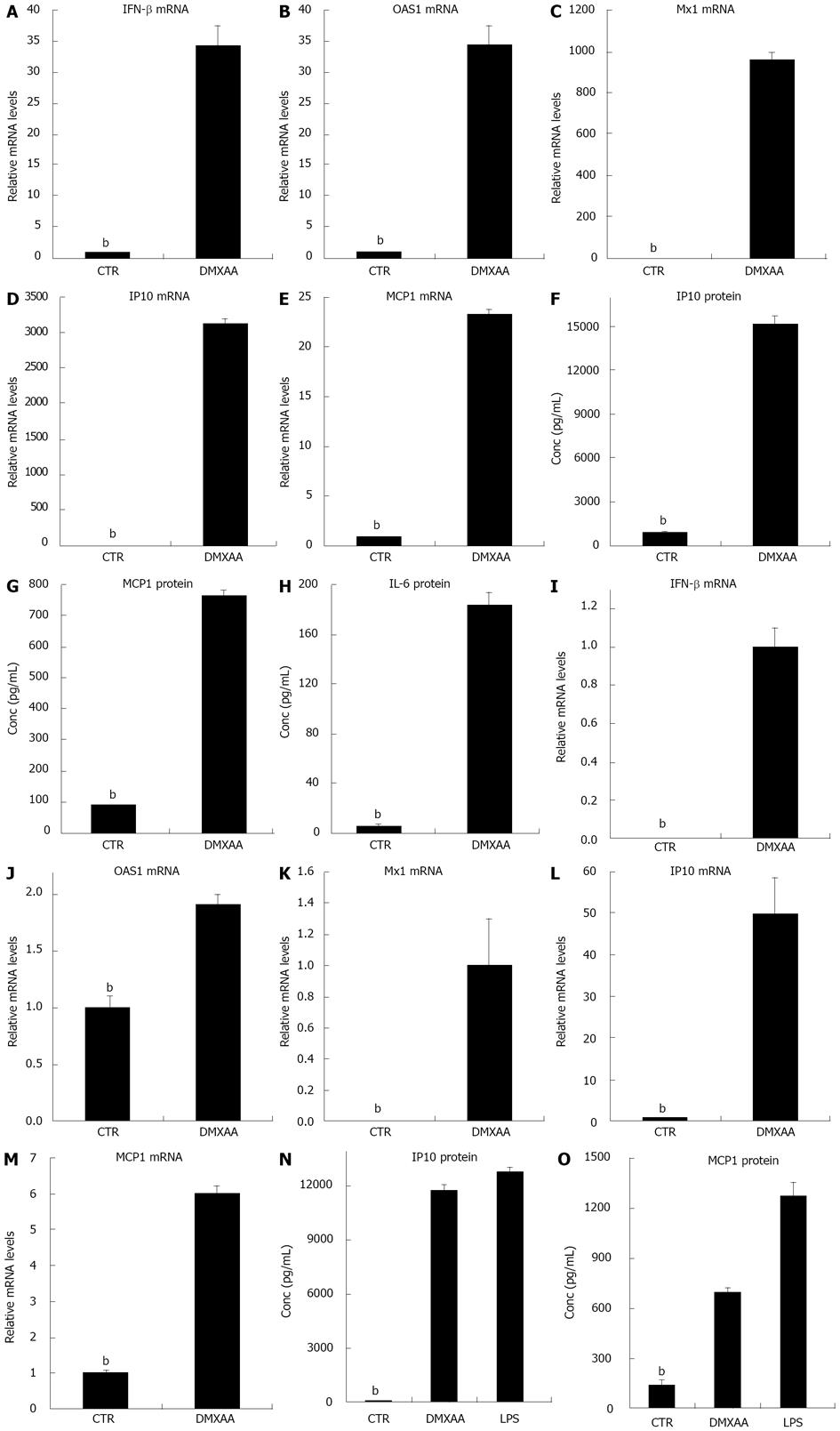Copyright
©2013 Baishideng Publishing Group Co.
World J Biol Chem. May 26, 2013; 4(2): 18-29
Published online May 26, 2013. doi: 10.4331/wjbc.v4.i2.18
Published online May 26, 2013. doi: 10.4331/wjbc.v4.i2.18
Figure 1 5,6-dimethylxanthenone-4-acetic acid elevates interferon-β-mediated antiviral genes and other chemokine/cytokine levels in mouse thioglycollate-elicited peritoneal and bone marrow derived macrophages.
A-E: Cells were incubated with or without 5,6-dimethylxanthenone-4-acetic acid (DMXAA) 100 μg/mL for 5 h. The total RNA was isolated and the relative interferon (IFN)-β, 2’,5’-oligoadenylate synthetase 1 (OAS1) and myxovirus resistance 1 (Mx1), inducible protein-10 (IP10), macrophage chemotactic protein (MCP1) and interleukin (IL)-6 mRNA levels were measured by real time reverse transcription-polymerase chain reaction; F-H: Induction of IP10, MCP1 and IL-6 protein was determined from the supernatant by enzyme-linked immunosorbent assay (ELISA); I-M: Cells were incubated with or without DMXAA 100 μg/mL or lipopolysaccharide (LPS) 100 ng/mL for 5 h. The total RNA was isolated and the relative IFN-β, OAS1 and Mx1, IP10, MCP1 and IL-6 mRNA levels were measured by real time reverse transcription-polymerase chain reaction; N,O: Induction of IP10 and MCP1 protein was determined from the supernatant by ELISA. The results presented as mean ± SE (bP < 0.01 vs DMXAA or LPS).
- Citation: Yu Z, Predina JD, Cheng G. Refractoriness of interferon-beta signaling through NOD1 pathway in mouse respiratory epithelial cells using the anticancer xanthone compound. World J Biol Chem 2013; 4(2): 18-29
- URL: https://www.wjgnet.com/1949-8454/full/v4/i2/18.htm
- DOI: https://dx.doi.org/10.4331/wjbc.v4.i2.18









